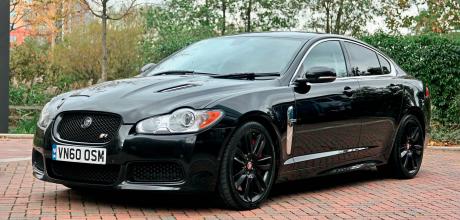2011 Jaguar XFR Le Mans Limited Edition X250
Dealer limited editions aren’t normally the type of car to draw collectors’ attention, but the Jaguar XFR Le Mans Edition X250 is a lot more special than most.
Legion of honour
WORDS AND PHOTOGRAPHS CRAIG CHEETHAM
Special Edition XF rarity
XFR LE MANS
We unearth one of the lesserknown special edition Jaguars, created by dealer group Stratstone.
With its thumping 5.0-litre supercharged V8 and its sensational handling, the Jaguar XFR is a pretty special car at the best of times. But in 2010, the Stratstone dealer group – one of the brand’s most prolific retailers – commissioned a special run of 50 limited edition cars that took it to the next level.
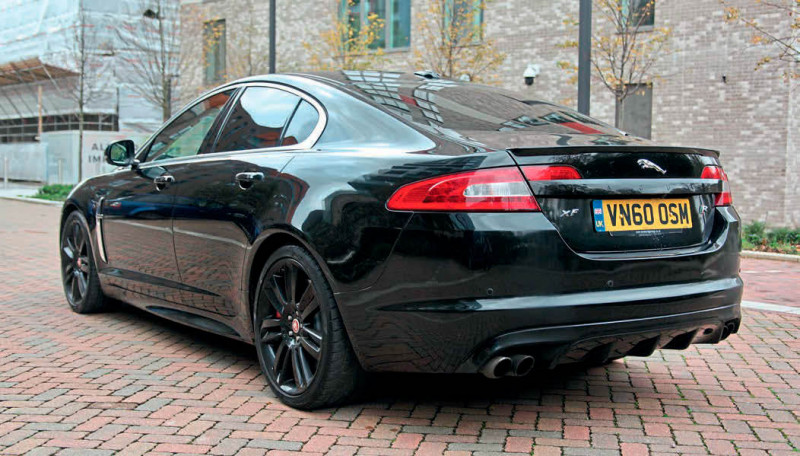
The XFR Stratstone Le Mans Edition was offered in either Midnight Black or Polaris White, and was produced (somewhat unusually for a dealer special) with the full backing of the factory. The reason behind that was CSR – or Corporate and Social Relations – an important part of any car manufacturer’s public policy operation. Stratstone had pledged to donate £5000 from the sale of its Le Mans Editions to the Royal British Legion, which meant good PR, so Jaguar was predisposed to assist and allow the dealer group to make some changes to the specification.
A total of just 50 Le Mans Editions were produced – 25 in each colour – £100 from the sale each going to the charity. It very nearly cost Stratstone a whole lot more than that, too, as the Circuit de la Sarthe – owners of the Le Mans 24hr trademark – were somewhat disgruntled by Stratstone’s naming convention, for which they allegedly hadn’t sought permission.
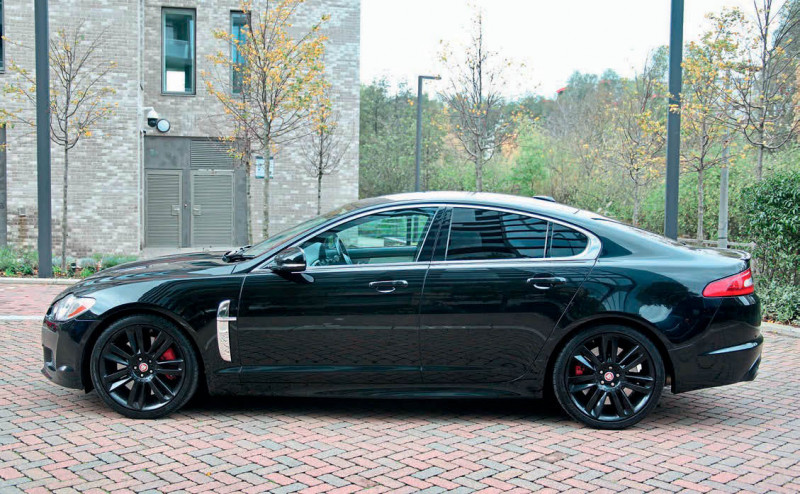
Each one came with a numbered plaque on the door shuts and a unique Le Mans Edition gear selector, along with several exterior and interior features unique to the model. Under the skin, the Stratstone special was very much the same as the standard XFR, but that was no bad thing at all as it meant you got the model’s wonderful 5.0-litre supercharged V8, with 510PS and a 0-60mph time of 4.7 seconds. Close to supercar performance in a compact saloon package.
As well as the choice of just two paint colours, the exterior modifications included a black front grille with a colour-coded grille surround, chrome finish twin bonnet louvres with “supercharged” script and 20-inch gloss black wheels with ‘Jaguar R’ brake callipers and red centre caps.
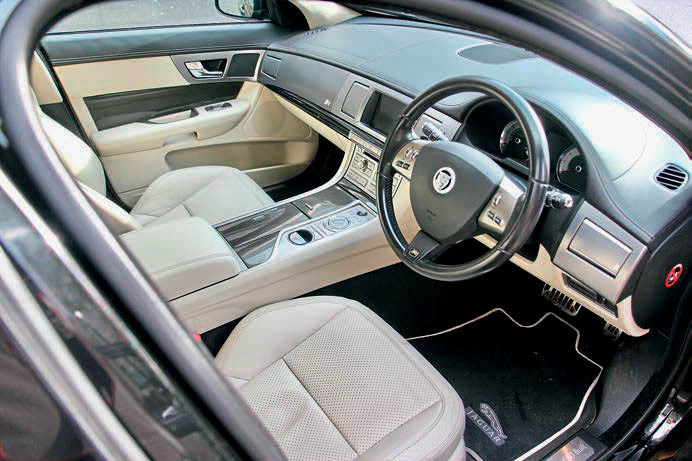
Open the door and aside from the numbered sill plaque (this one is number 11 of 50), it also got special edition embossed leather headrests, a gear selector carrying the Stratstone Le Mans chequered flag emblem, piano black veneers and a dark mesh aluminium dash, while the seat stitching was reflected by the stitch pattern in the dash. It was subtly different from the standard XFR, but different nonetheless.
Speaking at the car’s launch, Stratstone’s Managing Director, James Brearley, said: “The Limited Edition is the definitive sporting saloon and no detail has been spared.
“Already deemed a future classic, demand for this iconic model is exceptionally high which is great news for this year’s Poppy Appeal, a very worthy cause given the almost daily news of the sacrifices our service men and women are making in Afghanistan.”
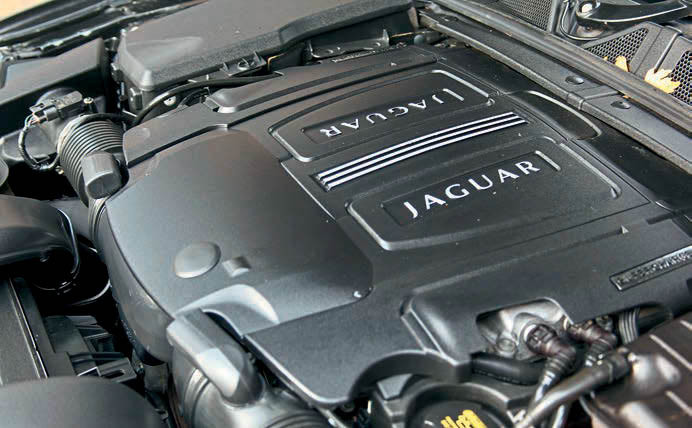
In addition to supporting the Royal British Legion Poppy Appeal, purchasers of the XFR Stratstone Le Mans Limited Edition were also offered the opportunity to join 200 VIP Stratstone Group guests at the 79th annual Le Mans 24-hour race in June 2011 – a VIP hospitality experience valued at over £1000 – a nice perk, but one you had to buy a £66,000 car to benefit from in the first instance, and quite possibly a side-effect of Stratstone’s negotiations with Circuit de la Sarthe over the car’s name…
Today, the XFR Le Mans Edition is worth a fair chunk less than that – the one in our photos is a four-owner example that sold recently at auction for £12,500, but it’s a special edition that’s not likely to ever get much cheaper thanks to its rarity, along with the fact it has generally good awareness among the Jaguar community. Indeed, buy one now and you’re more than likely making a safe investment for the future. After all, there were only 50 to start with.
With a shade over 81,000 miles on the clock, Limited Edition 11 out of 50 is a good example of the model that has clearly been well-maintained and looked after throughout its life, as backed-up by a decent specialist service history and a generally healthy appearance. The Midnight Black paint is extremely smart, the alloys show only the slightest of scuff marks and the interior has gentle wear, but nothing horrendous: some light rubbing to the seat bolster and a few general marks, but it’s holding up well for a 12-year-old car and shows just how far Jaguar’s build quality has come over the past couple of decades.

It’s a looker as well – the Le Mans Editions tweaks might not be substantial, but they make a difference – especially that neat body-coloured grille surround that you don’t see on any other pre-facelift XF. It’s a fabulous thing to drive, as you might expect. The 5.0-litre V8 is one of Jaguar’s best-ever engines, as at-home under the bonnet of an XF as it is in the F-Type sports car. Yet although the XFR can be a screaming monster if you need it to be, at town speeds it’s a docile companion, still managing to deliver greater ride comfort than most of its rivals, though perhaps with less finesse than Jaguar’s older performance saloons, which were beautifully set-up – the pressure of matching the likes of BMW and Audi around the Nürburgring too difficult for Jaguar’s engineers to ignore. Certain motoring writers have a lot to answer for…
Overall, though, the XFR feels like a pretty special car, and from its branded gear selector and personalised kick-plates through to its unique grille and classy bonnet vents, the Le Mans Edition feels a whole lot more complete than your average dealer special – we’re not talking carpet mats, aftermarket alloys and some stick-on decals here, we’re talking about a fully-fledged, manufacturer-endorsed and genuinely limited production model that was based on a highly desirable car to start with. If those aren’t future classic credentials, we don’t know what are.
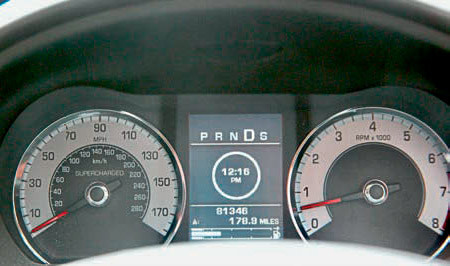
Thanks to: SE Jags of Charlton, London, for their help with this feature (sejagsltd.co.uk)
The 5.0-litre V8 is one of Jaguar’s best-ever engines
DEALER EDITIONS
The dealer edition used to be a popular thing back in the ’80s, usually amounting to little more than side stripes and a pop-up glass sunroof added to shift slow-selling Escorts, but as we’ve seen, sometimes there’s a little more effort involved and the XFR Le Mans isn’t the first Jaguar to receive a makeover by a dealer group.
When the Thames Ditton-based Jaguar dealer Guy Salmon wanted to celebrate its 50th anniversary in 1985, it went to greater lengths than most to mark the occasion. It didn’t just print flyers, give away stickers or organise a few minutes of air time on local radio, it designed and produced a special version of the XJ-S, the Jubilee.
Wanting the cars to receive more than only different paint and wheels as previous dealer-made special editions had been, Guy Salmon changed the car’s profile, adding a steel wing to the rear of the roof on the coupe and to the boot lid. The American-spec twin headlight conversion was also adopted as standard. Customers could specify new colour-coded front and rear aprons, plus side skirts similar to the ones TWR was producing at the time, and a variety of wheel options, from standard alloys to aftermarket rims. The most noticeable addition – and arguably the most contentious – was a small traditional-shaped Jaguar grille fitted to the nose of the car over the XJ-S’s existing grille. Shallow and an awkward fit, the jury is still out whether it was a successful addition, but it certainly made the car stand out from the crowd. The cars were repainted, usually two-tone, with chrome strips along the sides, and a Jaguar leaper with another chrome strip down the bonnet. Inside, there was the option of better quality sound proofing, restyled seating and door trim in two-tone colour schemes, deep pile carpeting, a wood-rimmed steering wheel, and the option to have the dashboard retrimmed in leather. The result was what the brochure described as, ‘A new, up-to-the-minute look.’
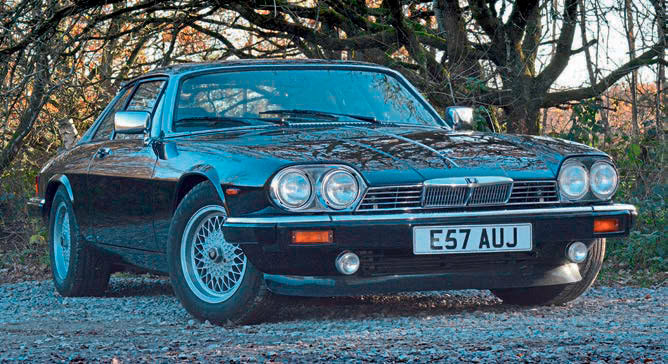
Built to order and based on brand new examples rather than existing customer cars, all varieties of XJ-S could be modified, including the V12, 3.6, coupe and cabriolet. One area of the car that wasn’t touched, however, was the XJ-S’s technical specification. Not that many owners would have taken up other specifications due to the initial cost; a Guy Salmon Jubilee XJ-S was another £16,000 on top of the car’s list price. To put that into context, in 1985, you could have bought three Austin Maestros for the same amount. Guy Salmon produced the XJ-S Jubilee between 1985 and 1987, reducing the conversion to just the grille thereafter. It’s not exactly known how many of these simpler Guy Salmon XJ-Ss were built, although 350 is a commonly quoted number.


